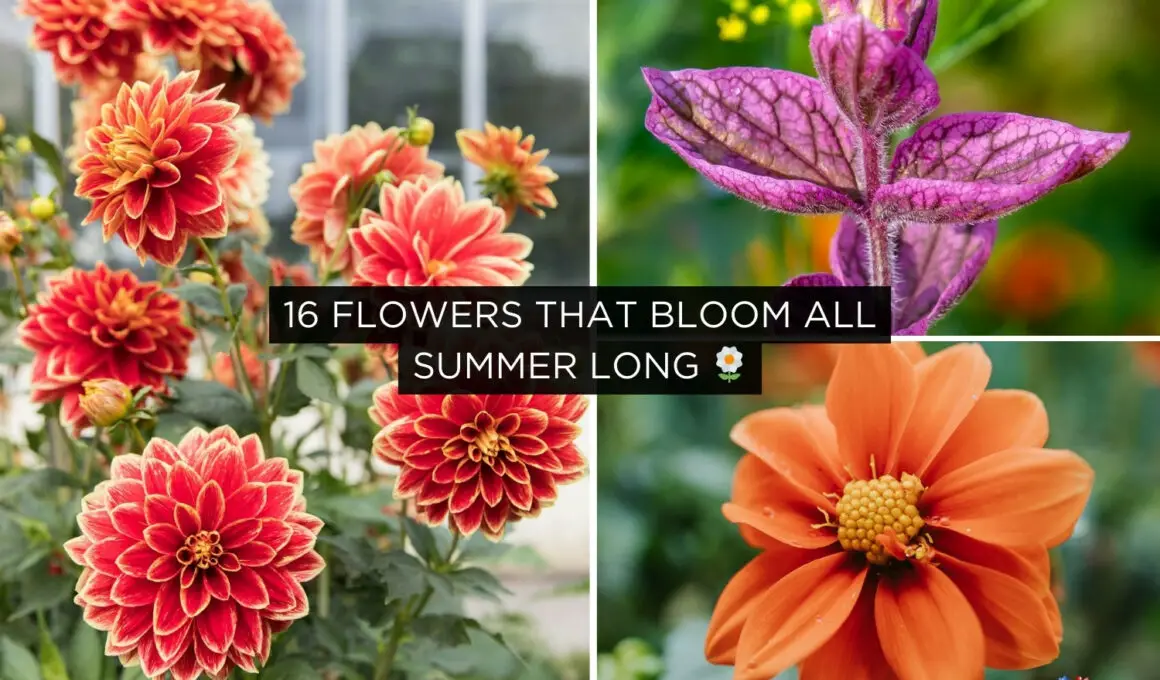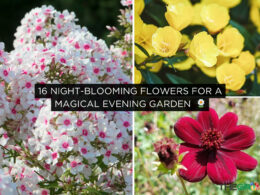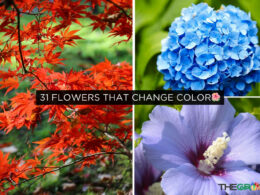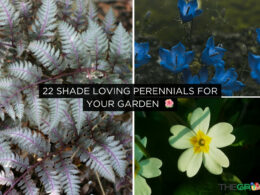In This Article Show
As someone who’s been nurturing gardens for over a decade, I’ve come to appreciate the vibrant life that summer-blooming flowers bring to our outdoor spaces. The warm months offer a unique opportunity to transform our gardens into a continuous display of colors and fragrances.
Choosing the right flowers is not just about beauty. It’s about creating a sustainable, lively garden that offers a haven for us, as well as for pollinators like bees and butterflies.
In this guide, we’ll explore 16 flowers that are not only stunning but are also champions of the summer bloom. From the sun-loving Zinnia to the shade-tolerant Impatiens, each flower has its unique charm and requirements.
Flowers That Bloom All Summer Long
Whether you’re looking to add a splash of color to your balcony or to design a sprawling garden landscape, these summer-blooming flowers will ensure your outdoor space is a flourishing oasis from the last frost of spring to the first chill of fall. So, let’s get our gardening gloves ready and embark on this floral journey together.
1. Marigold
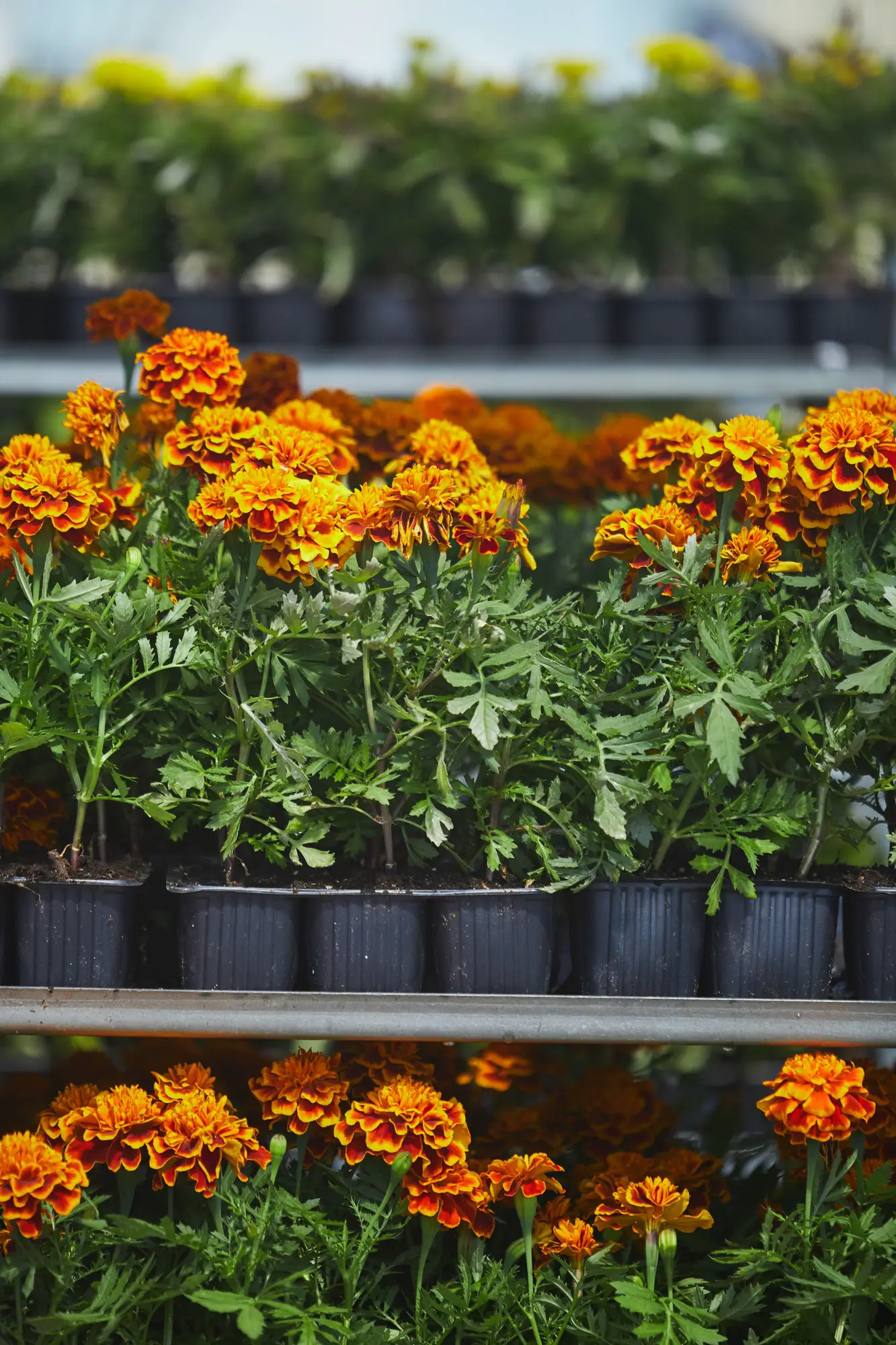
Marigolds are a gardener’s delight, offering a spectrum of warm colors from bright yellow to deep orange and rich mahogany. Their hardy nature and prolific blooming habits make them a popular choice for borders, containers, and companion planting. With varieties ranging from petite to large blooms, marigolds bring a cheerful presence to the summer garden.
- Care Tips: Thrive in full sun and prefer well-draining soil. Water at the base to prevent leaf diseases. Deadhead regularly to encourage more blooms.
- Summer Perks: Marigolds are not just visually appealing; they also repel garden pests and attract beneficial insects, making them valuable allies in the garden ecosystem.
2. Zinnia
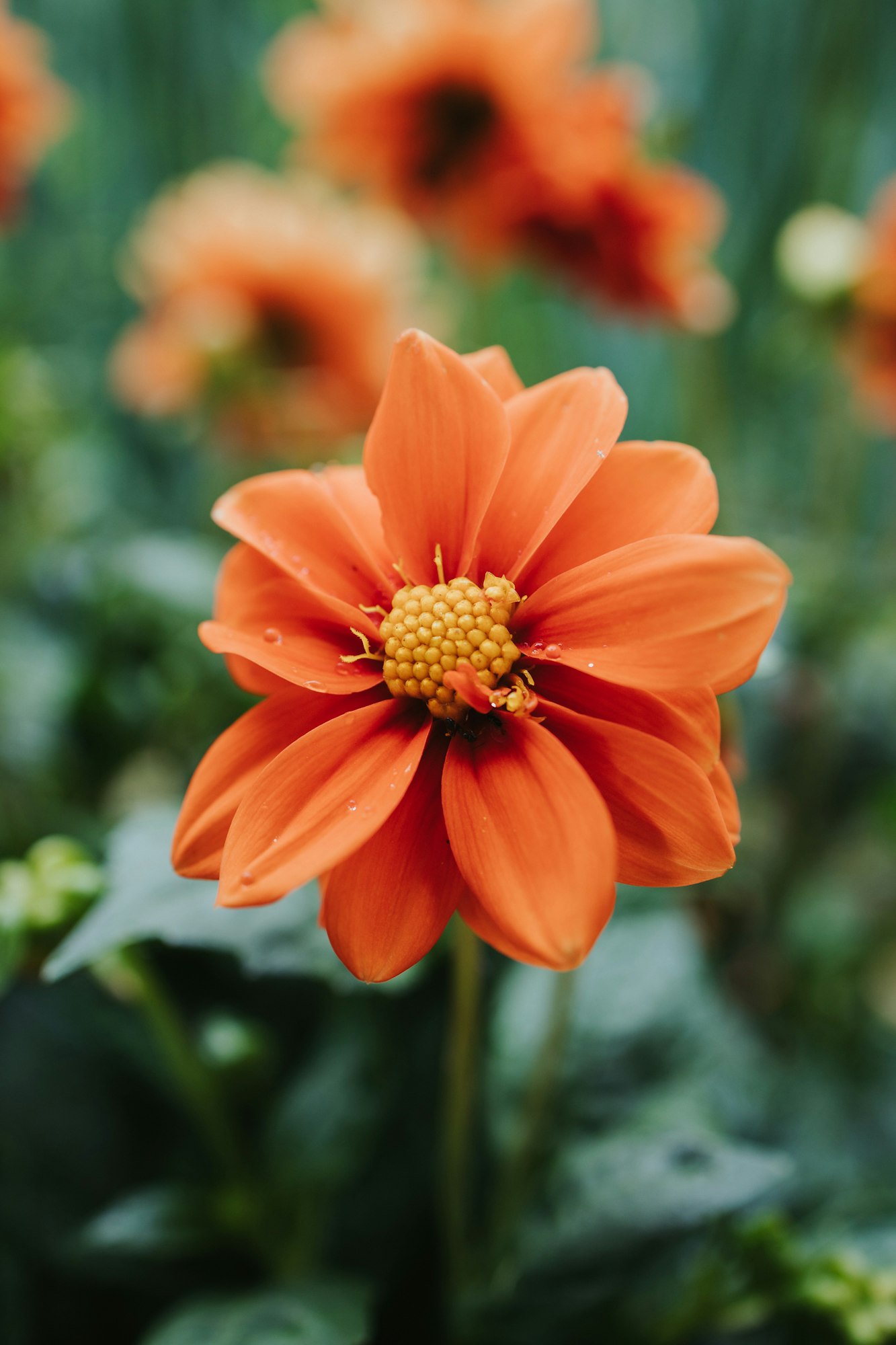
Zinnias are a celebration of color, with a stunning variety of hues that brighten any garden space. Their flowers can be single, double, or semi-double, with a range of sizes that make them perfect for every garden design. Easy to grow from seed, zinnias are a favorite for their long-lasting blooms and ability to attract butterflies and hummingbirds.
Get Gardening For Beginners
Our new EBOOK shows newcomers and green thumbs alike a step by step guide to growing the garden of their dreams.
- Care Tips: Plant in a location that receives full sun for most of the day. They prefer well-drained soil and regular watering, especially during dry spells. Deadheading encourages continuous blooming.
- Vibrant Colors: Zinnias’ broad color palette and straightforward care make them indispensable for a lively summer garden.
3. Petunia
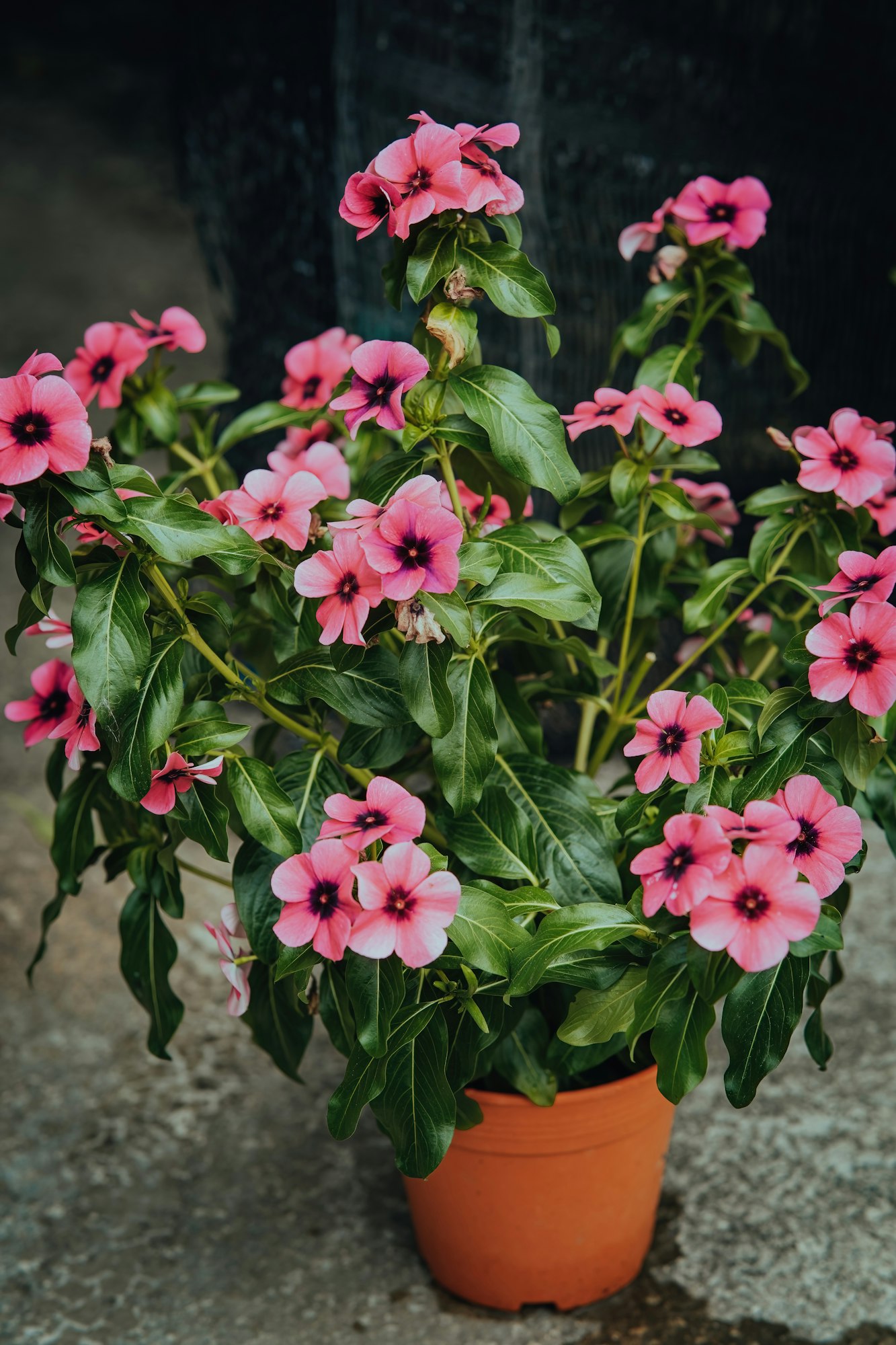
Petunias are versatile and vibrant, known for their wide array of colors and patterns, including stripes, solids, and picotees. Their ability to flourish in hanging baskets, containers, and garden beds makes them a versatile choice for adding layers of color throughout the garden. From trailing to mounded varieties, petunias provide endless possibilities for gardeners.
- Care Tips: These flowers thrive in full to partial sun. They require regular watering to keep the soil moist and benefit from fertilization every few weeks to support their prolific blooming.
- Garden Versatility: Petunias’ long blooming season and ease of care make them a go-to for gardeners seeking continuous color with minimal maintenance.
4. Geranium
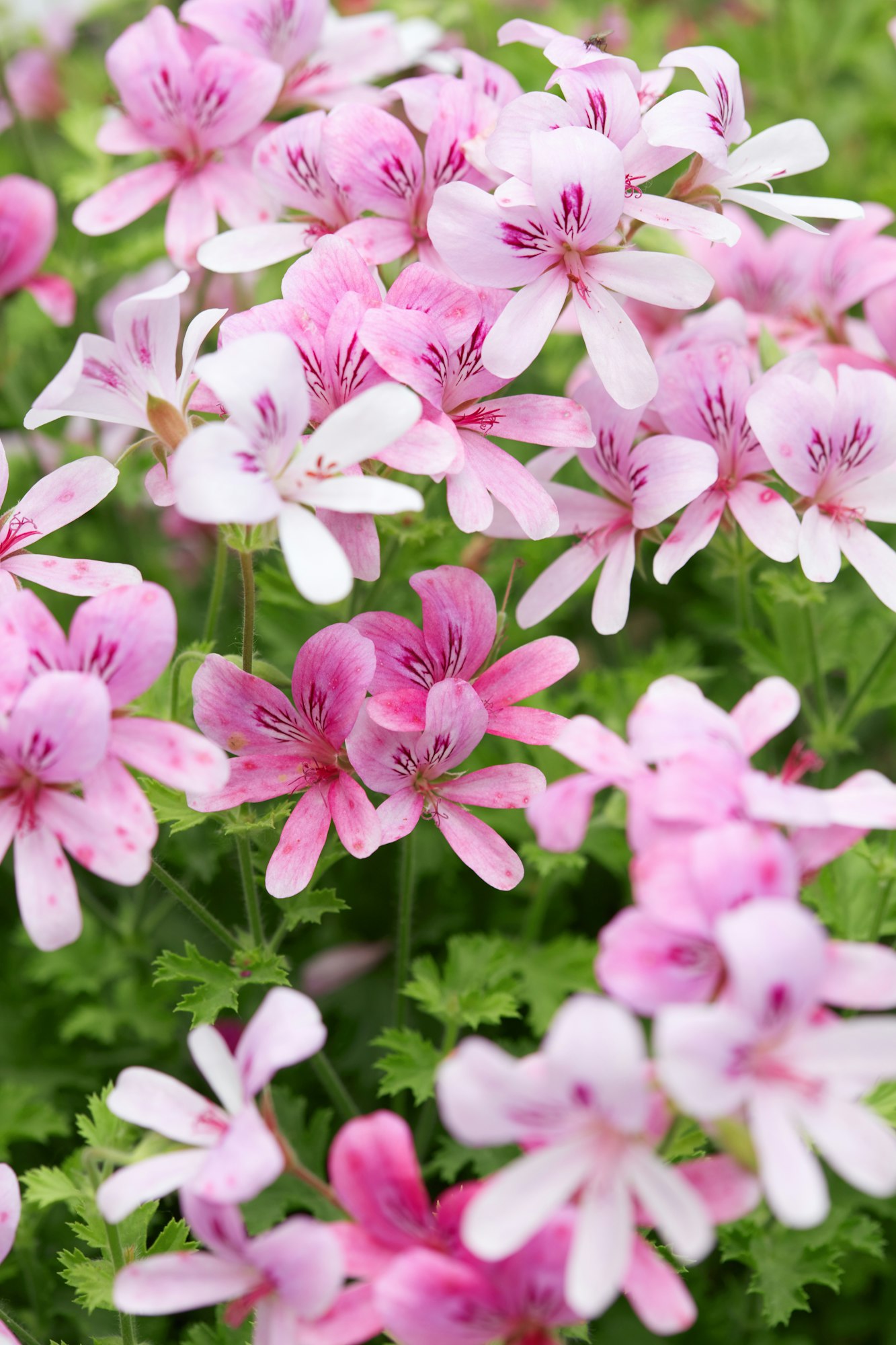
Geraniums are cherished for their richly colored blooms and aromatic foliage, which can deter pests. They offer a robust display of flowers ranging from deep red to pink, lavender, and white. Geraniums can be grown in pots, hanging baskets, or directly in the garden, providing versatility in use and placement.
- Care Tips: These plants prefer cool, sunny spots and well-draining soil. Water them when the soil feels dry to the touch, and deadhead spent blooms to encourage new flowers.
- Aromatic Benefits: The fragrant leaves of geraniums can enhance the sensory experience of the garden, making them a dual-purpose plant for both beauty and aroma.
5. Begonia
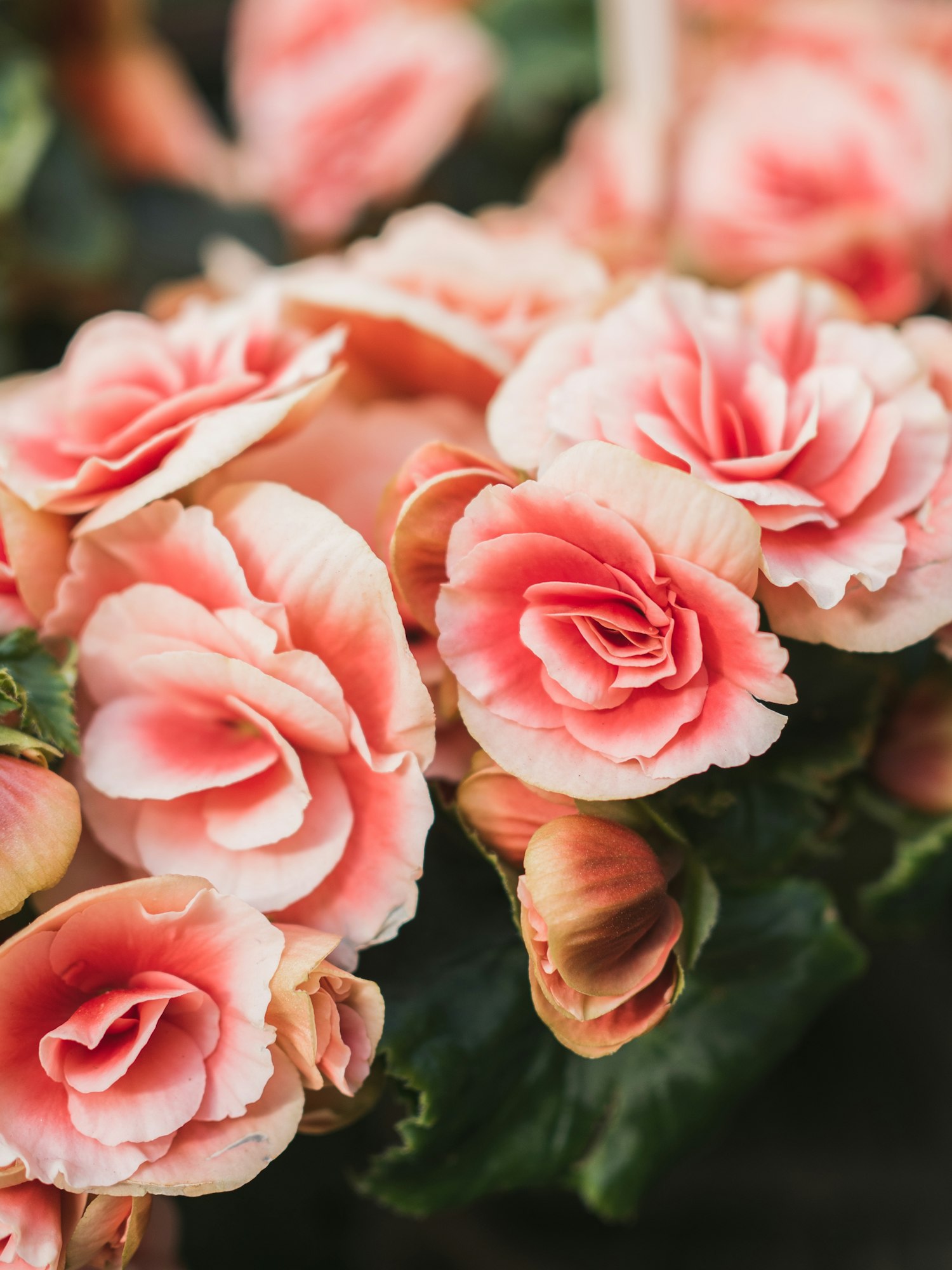
Begonias are a diverse group of plants, with varieties showcasing beautiful flowers or striking foliage. They thrive in shaded areas where few other blooms can, bringing light and color to darker corners of the garden. Their flowers come in a range of colors, including pink, red, white, and yellow, complementing their often colorful leaves.
- Care Tips: Plant in part shade to full shade in moist, well-draining soil. Water regularly, avoiding the leaves to prevent fungal diseases. Some begonias are sensitive to overwatering, so it’s crucial to let the soil dry slightly between waterings.
- Shade Tolerance: Their ability to bloom profusely in shaded conditions makes begonias invaluable for adding vibrancy to parts of the garden that receive little sunlight.
6. Cosmos
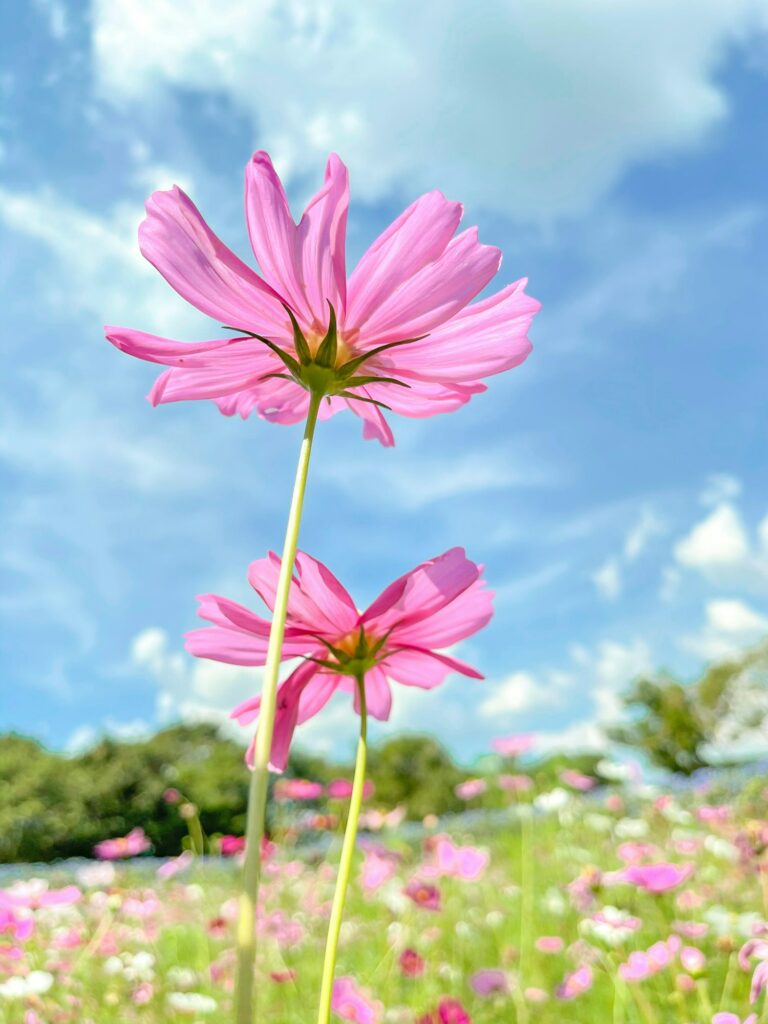
Cosmos flowers are the epitome of cottage garden charm, with delicate, daisy-like flowers that dance atop slender stems. They come in shades of white, pink, and deep burgundy, often with a bright yellow center that draws the eye. Cosmos are incredibly easy to grow from seed, making them a favorite for adding effortless beauty to the garden landscape.
- Care Tips: Cosmos prefer full sun and can thrive in poor to average soil, making them a great option for areas where other plants might struggle. Water regularly, but be careful not to overwater, as they are drought tolerant.
- Whimsical Appearance: The airy, ethereal quality of cosmos flowers adds a touch of whimsy and movement to the garden, creating a backdrop that’s both captivating and serene.
7. Lavender

Lavender is a timeless garden favorite, known for its soothing fragrance and attractive, spiky purple blooms. This hardy perennial adds not only visual appeal with its silver-green foliage but also a sensory experience unmatched by most other garden plants. Ideal for borders, herb gardens, or as a fragrant ground cover, lavender is as versatile as it is beautiful.
- Care Tips: Lavender thrives in full sun and well-drained, alkaline soil. It prefers dry conditions, so water sparingly and avoid overwatering to prevent root rot. Pruning after the first bloom can encourage a second flush of flowers in late summer.
- Calming Effect: The calming fragrance of lavender is perfect for creating a relaxing atmosphere in the garden. It’s also widely used in aromatherapy for its soothing properties.
8. Black-eyed Susan
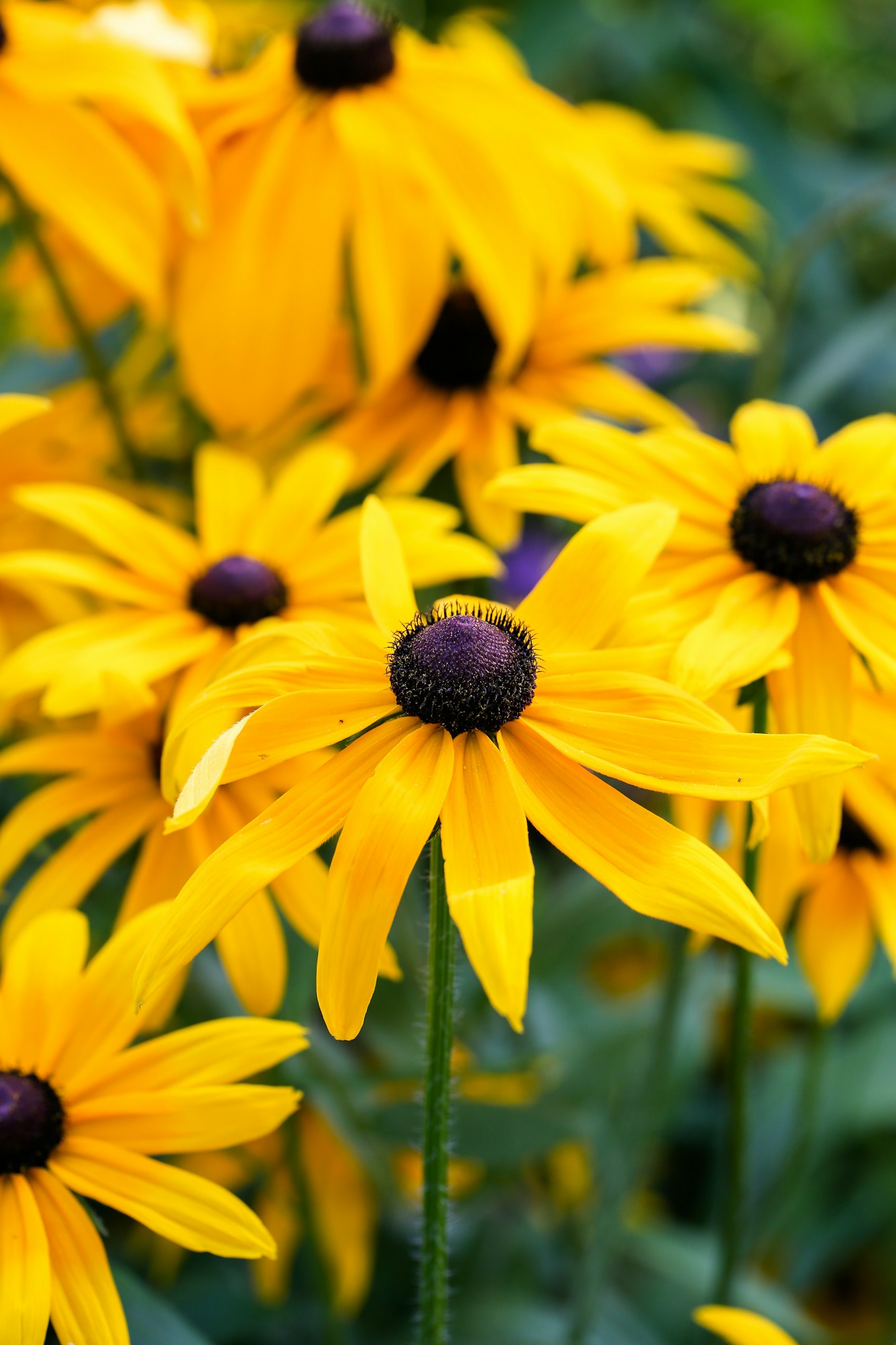
Black-eyed Susans are resilient, native perennials that bring a burst of sunshine to the garden with their bright yellow petals and dark brown centers. These flowers are a staple in wildflower gardens, attracting bees, butterflies, and other pollinators. Their ability to thrive in a variety of conditions makes them a low-maintenance choice for adding long-lasting color.
- Care Tips: Plant in full sun to light shade in well-drained soil. They are drought-tolerant once established but benefit from occasional watering during prolonged dry spells. Deadheading spent flowers can encourage more blooms.
- Native Advantages: As native plants, Black-eyed Susans are adapted to local climates and soil conditions, making them an excellent choice for gardeners looking to support local ecosystems and reduce garden maintenance.
9. Sunflower
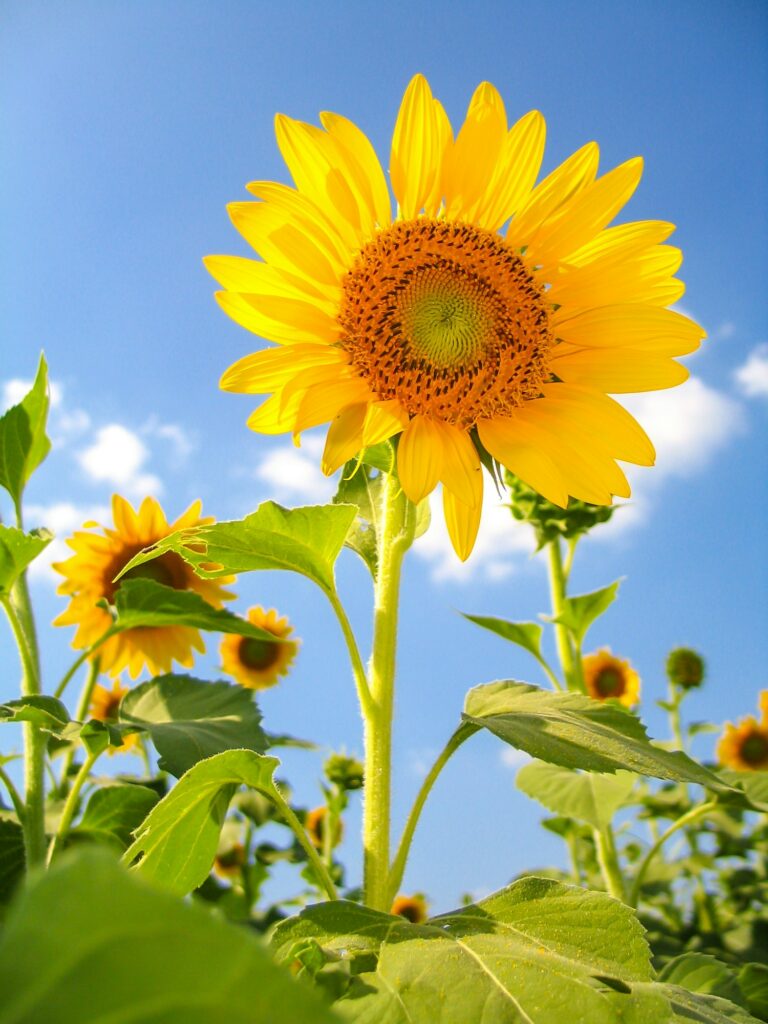
Sunflowers are the giants of the garden, known for their large, cheerful faces that seem to follow the sun across the sky. From towering varieties to more manageable dwarf types, sunflowers can suit any garden size. Their seeds are a valuable food source for birds, making them a wonderful addition to wildlife gardens.
Get Gardening For Beginners
Our new EBOOK shows newcomers and green thumbs alike a step by step guide to growing the garden of their dreams.
- Care Tips: Sunflowers prefer full sun and well-drained soil. They are relatively drought-tolerant but will benefit from regular watering during their growth period. Stake taller varieties to support their heavy heads.
- Sunny Demeanor: The presence of sunflowers in the garden adds a sense of grandeur and joy. Their blooms are not only beautiful to look at but also provide an interactive element as they turn to follow the sun.
10. Coneflower (Echinacea)
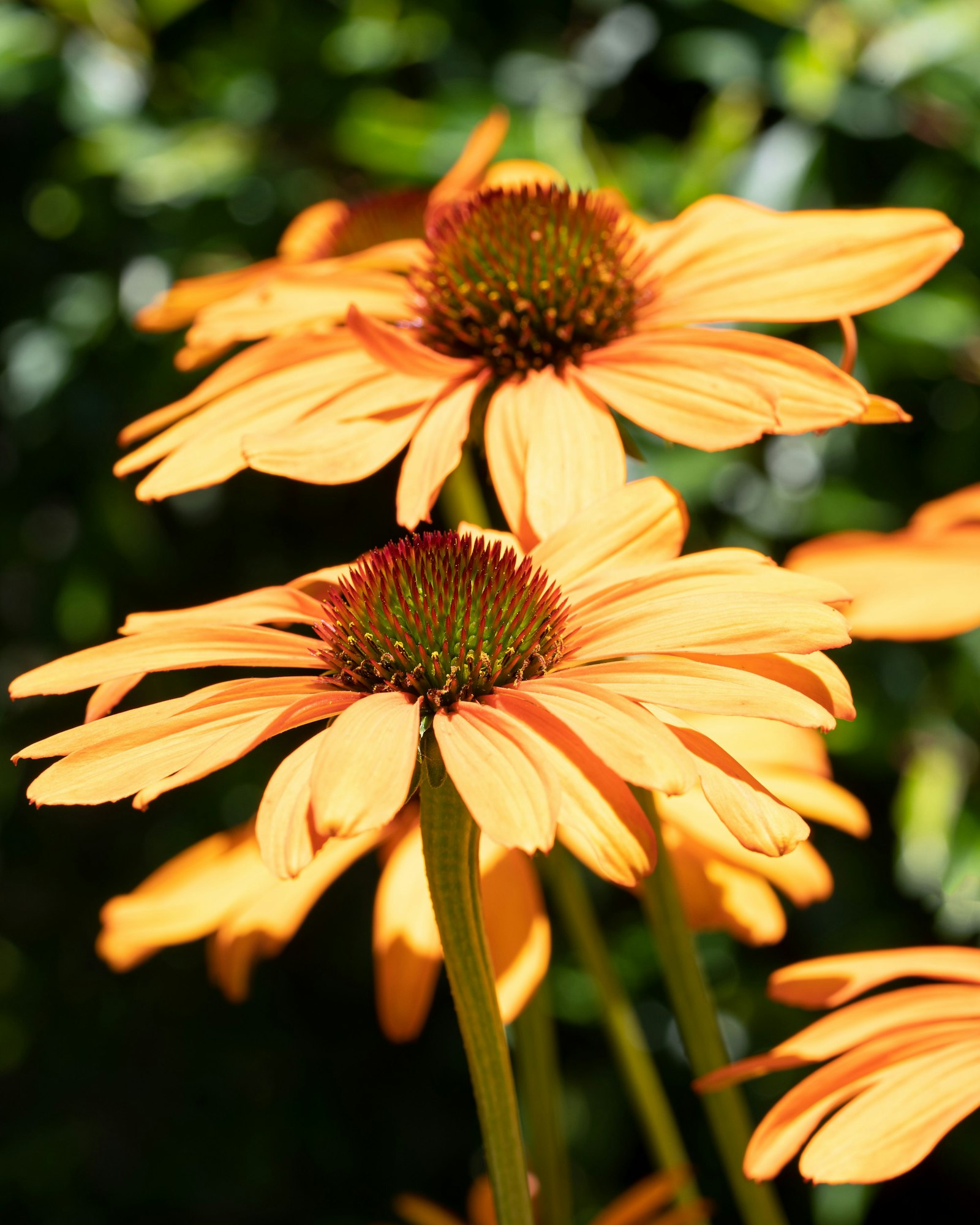
Coneflowers, or Echinacea, are beloved for their distinctive shape, with raised cone centers surrounded by petals in purple, pink, white, and yellow. These hardy perennials are a cornerstone of the perennial border, offering a blend of beauty and resilience. Their flowers are not only visually appealing but also medicinal, traditionally used to boost the immune system.
- Care Tips: Coneflowers thrive in full sun to partial shade and well-drained soil. They are drought-tolerant and disease-resistant, making them an excellent choice for gardeners seeking low-maintenance plants.
- Medicinal Benefits: Beyond their ornamental value, coneflowers have been used in herbal medicine for centuries, adding a layer of interest and utility to their cultivation.
11. Lantana
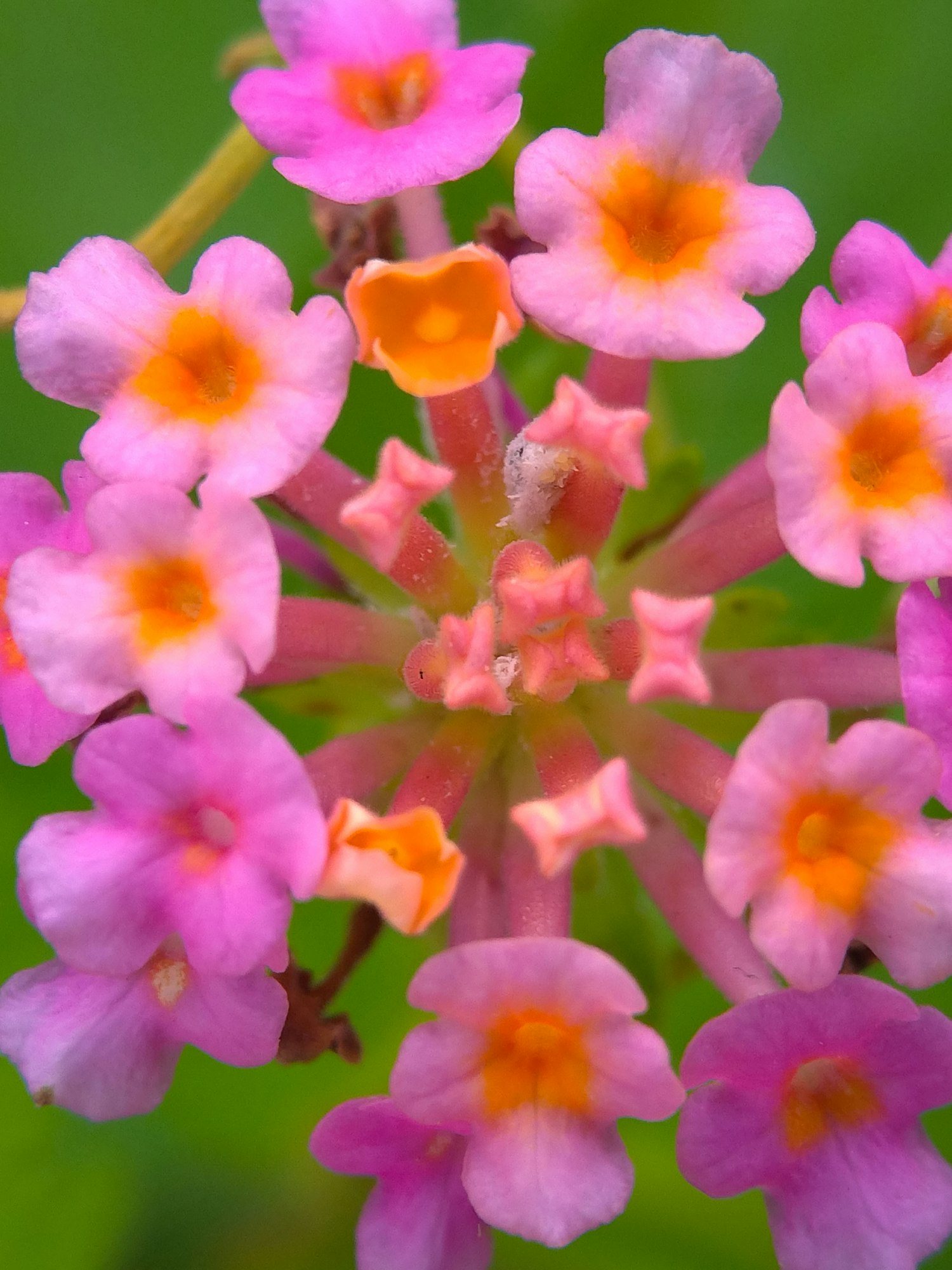
Lantana’s vibrant clusters of flowers come in a rainbow of colors, often changing as they age, creating a multi-hued display on a single plant. This tough plant is known for its ability to withstand hot, sunny conditions, making it a favorite for adding color in challenging climates. Lantana can be grown as a perennial in warmer zones or as an annual in cooler areas.
- Care Tips: Plant in full sun in well-drained soil. Lantana is drought-tolerant once established but benefits from regular watering during the heat of the summer. Pruning in early spring encourages bushier growth and more flowers.
- Butterfly Attraction: The nectar-rich flowers of Lantana attract butterflies, bees, and other pollinators, making it an excellent choice for a pollinator-friendly garden.
12. Verbena
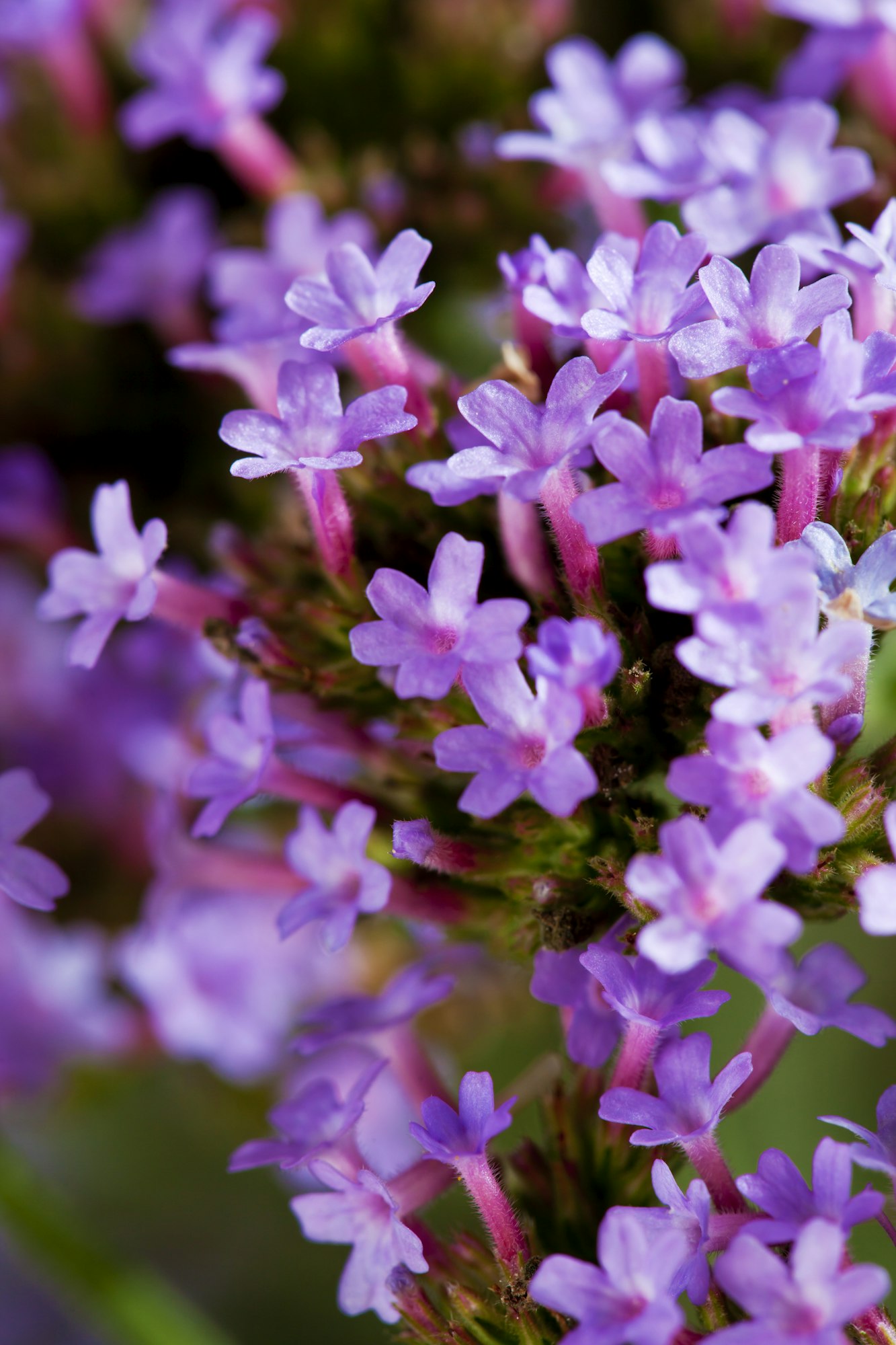
Verbena is a versatile plant that offers clusters of small, vibrant flowers on top of creeping stems, making it perfect for hanging baskets, borders, and ground covers. The flowers come in a range of colors, including purple, pink, red, and white, and bloom continuously from early summer until frost.
- Care Tips: Verbena thrives in full sun and well-drained soil. It’s relatively drought-tolerant but performs best with regular watering and the occasional feed. Deadheading is not necessary, as verbena will continue to produce new blooms.
- Ground Cover Use: Its spreading habit and long blooming season make verbena an excellent choice for covering bare spots in the garden or adding a splash of color to mixed borders.
13. Salvia
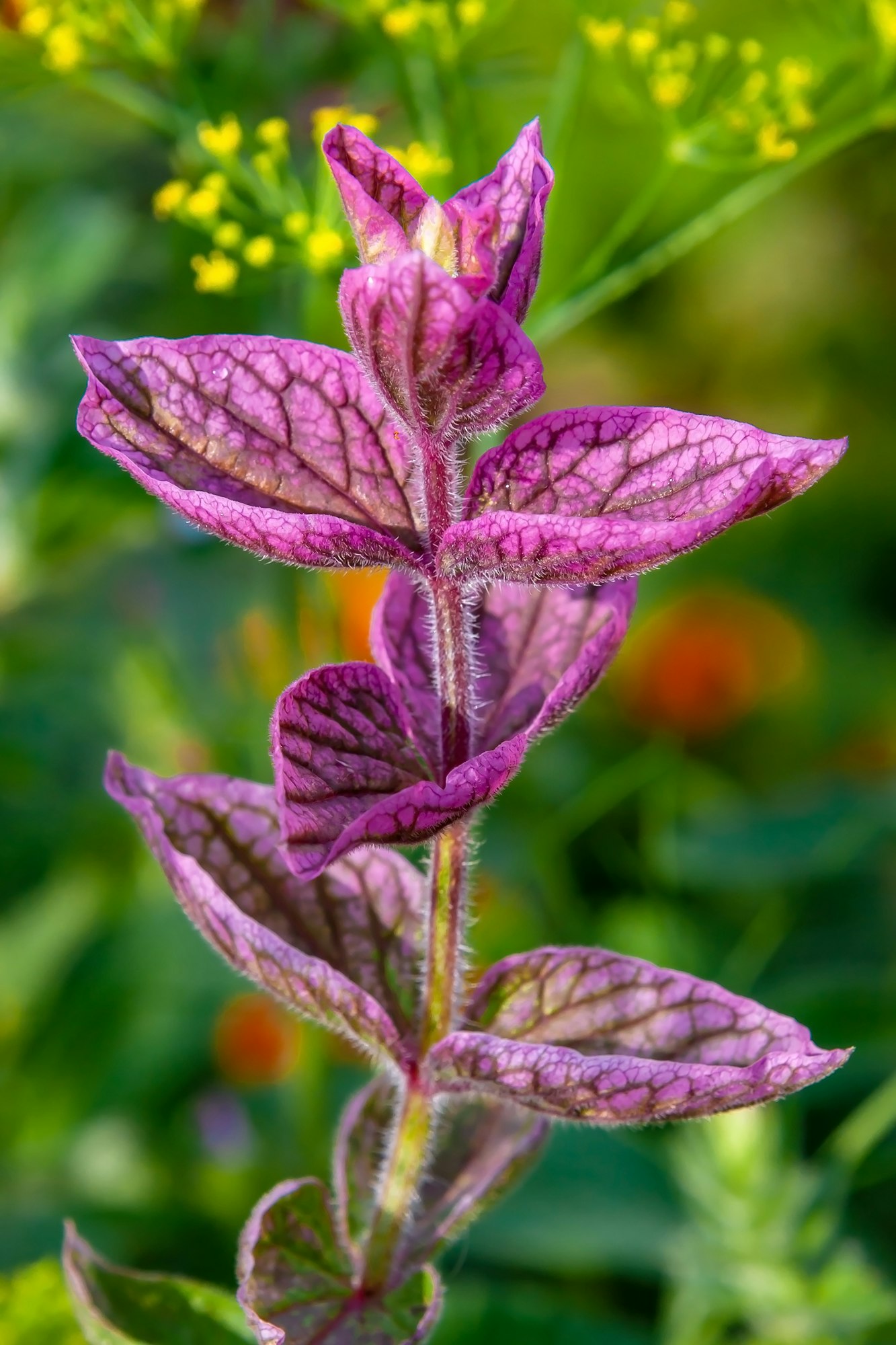
Salvia, also known as sage, offers spires of flowers in shades of blue, purple, red, and white. This diverse genus includes both annual and perennial species, each bringing its unique qualities to the garden. Salvias are prized for their drought tolerance, long blooming season, and ability to attract pollinators.
- Care Tips: Plant in full sun in well-drained soil. Water regularly, allowing the soil to dry out slightly between waterings.
- Drought Resistance: Salvias’ ability to thrive in dry conditions makes them a valuable addition to water-wise gardens, offering beauty and color without high water requirements.
14. Portulaca
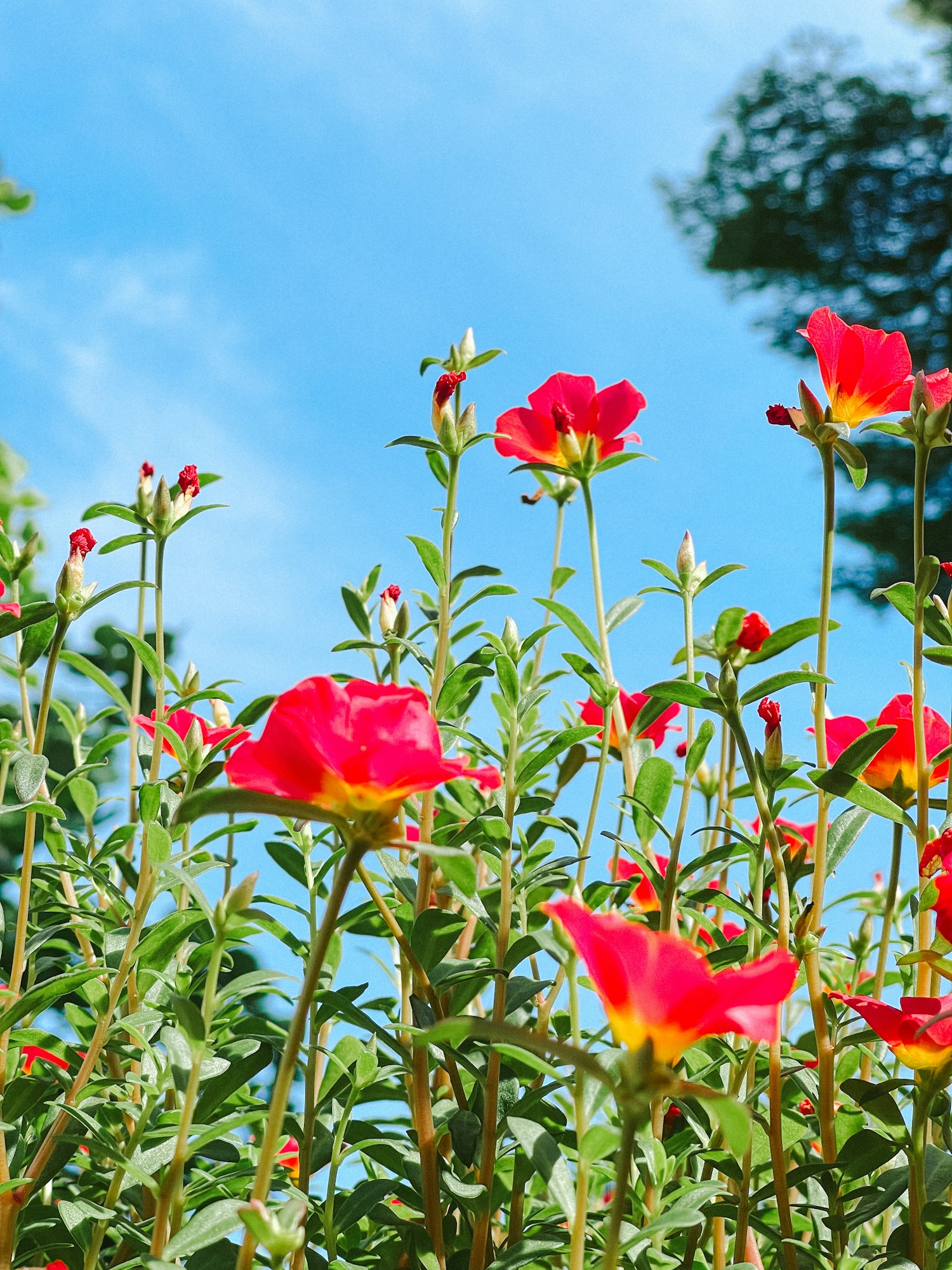
Portulaca, or moss rose, is a succulent plant that produces a carpet of jewel-toned flowers in sunny garden spots. Its fleshy, needle-like leaves retain moisture, making it incredibly drought-tolerant. The flowers, which open in full sun, come in shades of pink, yellow, orange, red, and white.
- Care Tips: Ideal for hot, dry areas, portulaca needs full sun and well-drained soil. Water sparingly, as its succulent leaves are excellent at retaining moisture.
- Succulent Features: Portulaca’s low-growing, spreading habit makes it an excellent choice for rock gardens, and borders, and as a drought-resistant ground cover.
15. Impatiens
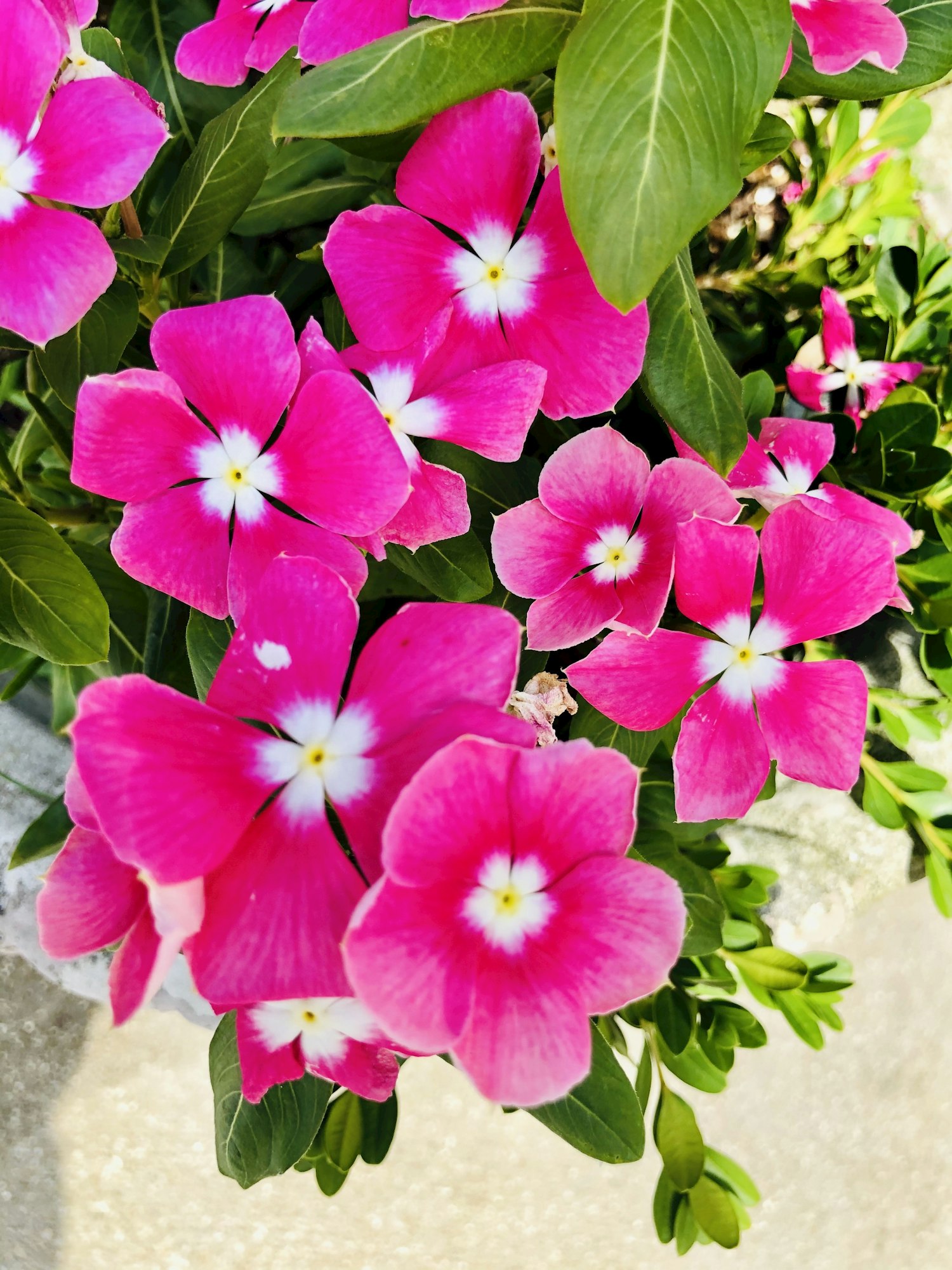
Impatiens are the go-to flower for brightening shady spots in the garden. Their lush foliage and vibrant flowers, available in a wide range of colors, make them a favorite for gardeners looking to add a splash of color to darker areas. Impatiens can thrive in both garden beds and containers, offering flexibility in garden design.
- Care Tips: Plant in partial to full shade in moist, well-draining soil. Regular watering is essential, especially in dry conditions, to keep impatiens looking their best.
- Shade-Loving Nature: The ability of impatiens to bloom profusely in low-light conditions makes them indispensable for bringing life and color to shaded areas of the garden.
16. Dahlia
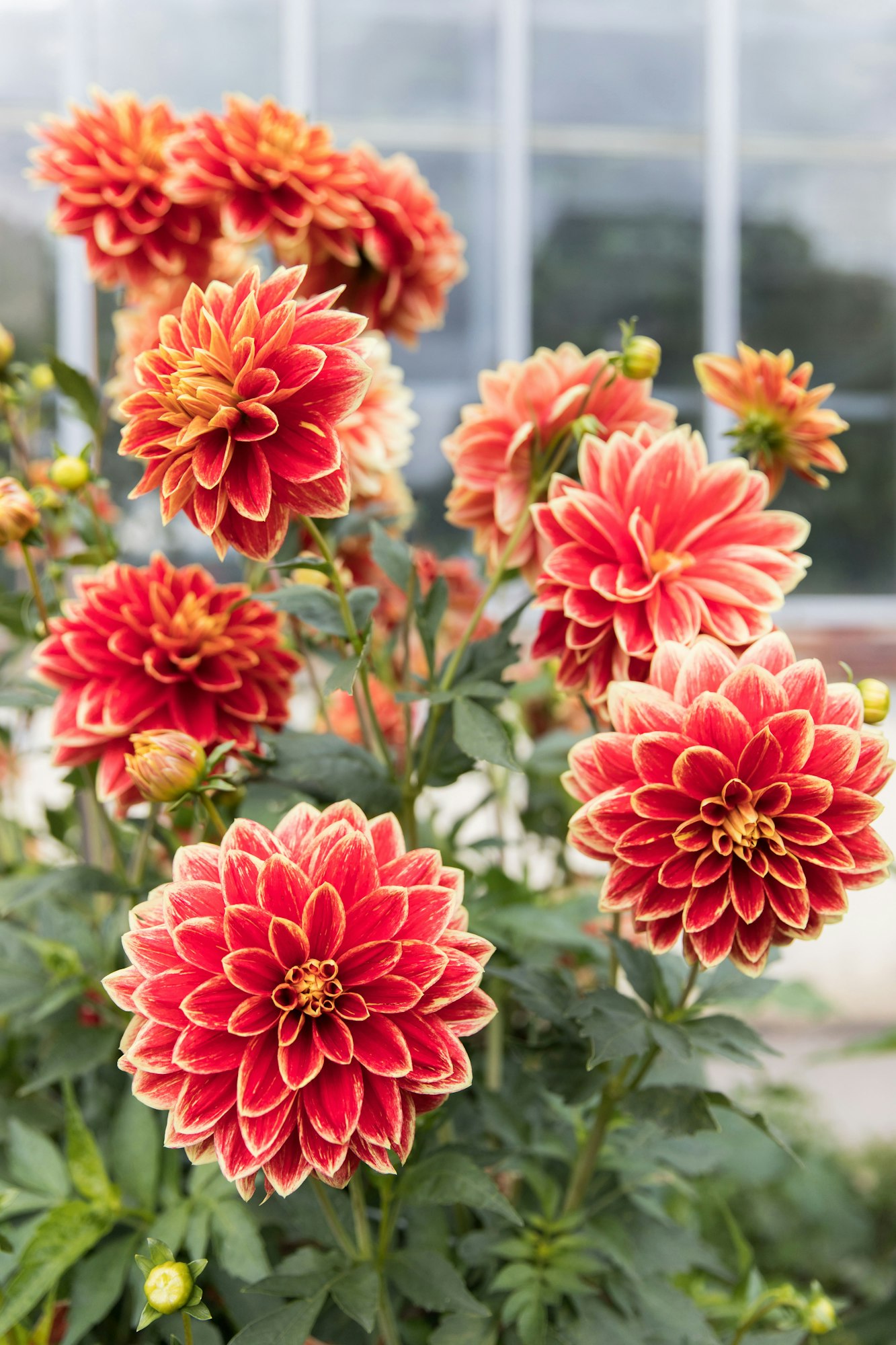
Dahlias are the showpieces of the late summer garden, with their wide range of sizes, colors, and bloom types, including single, double, and decorative forms. From small, delicate pompons to large, dramatic dinner-plate dahlias, there’s a variety to suit any garden style. Dahlias are tuberous perennials, which can be lifted and stored over winter in colder climates.
- Care Tips: Dahlias thrive in a sunny spot with well-drained soil. They require regular watering, especially during dry spells, and benefit from staking to support their large blooms.
- Dramatic Blooms: The stunning flowers of dahlias make them a favorite for both garden display and cutting gardens, providing spectacular color from midsummer until the first frost.
These detailed descriptions provide a deeper understanding of each flower’s characteristics, care requirements, and unique qualities, offering gardeners the information they need to create a vibrant, flourishing summer garden.





